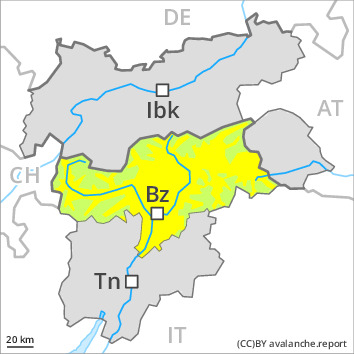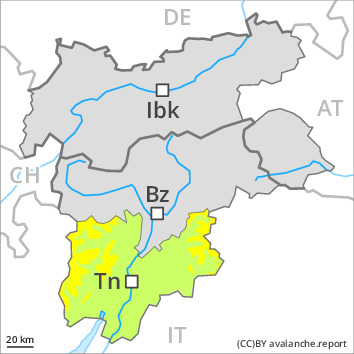
Danger level
 | 2800m |
|  |
|  |

Wet and gliding avalanches are still possible in isolated cases.
Individual wet and gliding avalanches are possible. In very isolated cases avalanches can release the saturated snowpack and reach a dangerous size. As a consequence of warming during the day and solar radiation only isolated loose snow avalanches are to be expected, especially in steep rocky terrain in all aspects.
Individual avalanche prone locations for dry avalanches are to be found in extremely steep terrain at high altitudes and in high Alpine regions. Apart from the danger of being buried, restraint should be exercised as well in view of the danger of avalanches sweeping people along and giving rise to falls.
The Avalanche Warning Service currently has only a small amount of information that has been collected in the field, so that the avalanche danger should be investigated especially thoroughly in the relevant locality.
Snowpack
High Alpine regions: As a consequence of a sometimes strong wind from variable directions, wind slabs formed in particular in gullies and bowls and behind abrupt changes in the terrain. The conditions will bring about a stabilisation of the snow drift accumulations. High altitudes: The weather conditions will give rise to increasing and thorough wetting of the snowpack.
Tendency
Individual avalanche prone locations for dry avalanches are to be found in extremely steep terrain. Individual wet and gliding avalanches are possible.
This is the final avalanche report for the winter 2023/24. Current information and announcements are posted on our blog.




